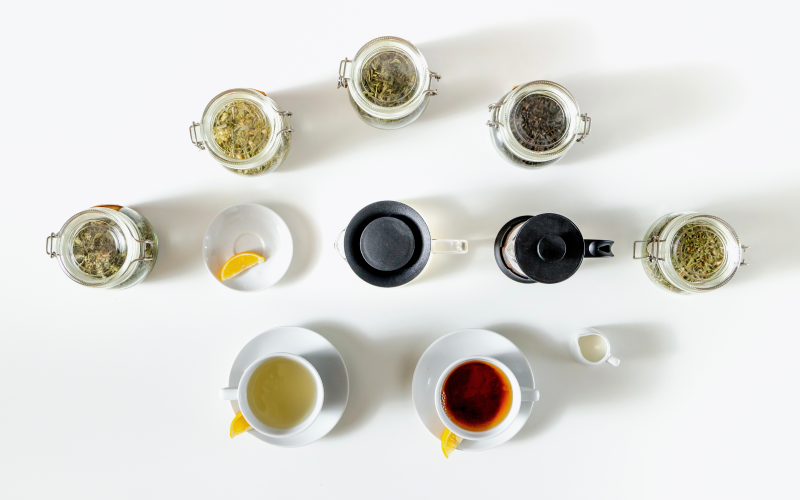
This article was developed within the program Venture an Idea funded by the USAID.
When you are offered tea in Serbia, it is important to point out that it usually refers to dried herbs or herbal mixtures. Of course, people also drink black and green tea, but you need to emphasize that you really want green tea. What people generally drink in Serbia are herbal infusions. These are made of herbs that all have significant medicinal properties. The best thing is that you can handpick them on mountain pastures, or by countryside roads and this means that you can obtain them fresh, without any kind of industrial processing. They are also a part of still widely practiced traditional medicine. We recommend to you some of the favorite herbal teas that you can find here. Almost any home has these and you can also find them in most of the cafés.
Mint is an herb of a characteristic scent and taste. Mint tea has a relaxing and calming effect. You can also use it for indigestion and sore throat.
Chamomile has an extremely pleasant sweet scent and mild aroma. One takes it to calm down all inflammatory processes, either applied to skin or mucosa, or drunk as a soothing beverage. Chamomile also stimulates your appetite.
Rose hip is a berry of a rose plant. Rose hip tea is full of vitamin C and its taste is mildly tart. It is used for headaches and urinary tract problems. It is bound to wake you up and boost your immunity, and you can use it to fight off springtime lethargy.
Rtanj tea got its name after Rtanj Mountain, where the herbs are gathered for this herbal mixture. The infusion has a beautiful aromatic scent and is used for respiratory problems, but also as an aphrodisiac. (We heartily recommend this mountain for hiking and gathering mountain herbs.)
Lemon balm tea has a wide range of medicinal properties. People usually take it in the evening as it has a relaxing effect and helps with insomnia. It has a calming effect on entire organism, especially psyche. Lemon balm alleviates symptoms of stress.
Thyme is a wonderfully smelling herb, also used as a spice, when oven-baking vegetables or meat (it complements potatoes very well), while thyme infusion helps with colds and coughs.
Linden tea is made of dried linden flowers and leaves. It has an intense sweet smell and flavour and is taken to alleviate fever and stimulate perspiration, as well as for stomach cramps.
St John’s wort tea has anti-depressant and antiseptic properties. This herb is highly useful and much valued. This herb certainly deserves for you to explore it as much as you can.
Yarrow has a quite bitter and sharp taste and is used as an intestine treatment. It has a strong antioxidant and anti-microbial effect. An exceptional and smart herb!
Sage tea is an aromatic tea used for sore throat and general inflammations of skin and mucosa. The infusion is also taken for indigestion. As a spice, salvia leaves are a great match for poultry.
This is a modest list of wonderful herbs with benefits and could become an interesting activity to make your mountaineering trips more interesting!
Even if you ignore these herbs’ medicinal properties, their scents and flavours would be enough to make you feel better and refreshed.
This article was made possible by the support of the American people through the United States Agency for International Development (USAID). The contents of this article are the responsibility of Nova Iskra do not necessarily reflect the views of USAID or the United States Government.